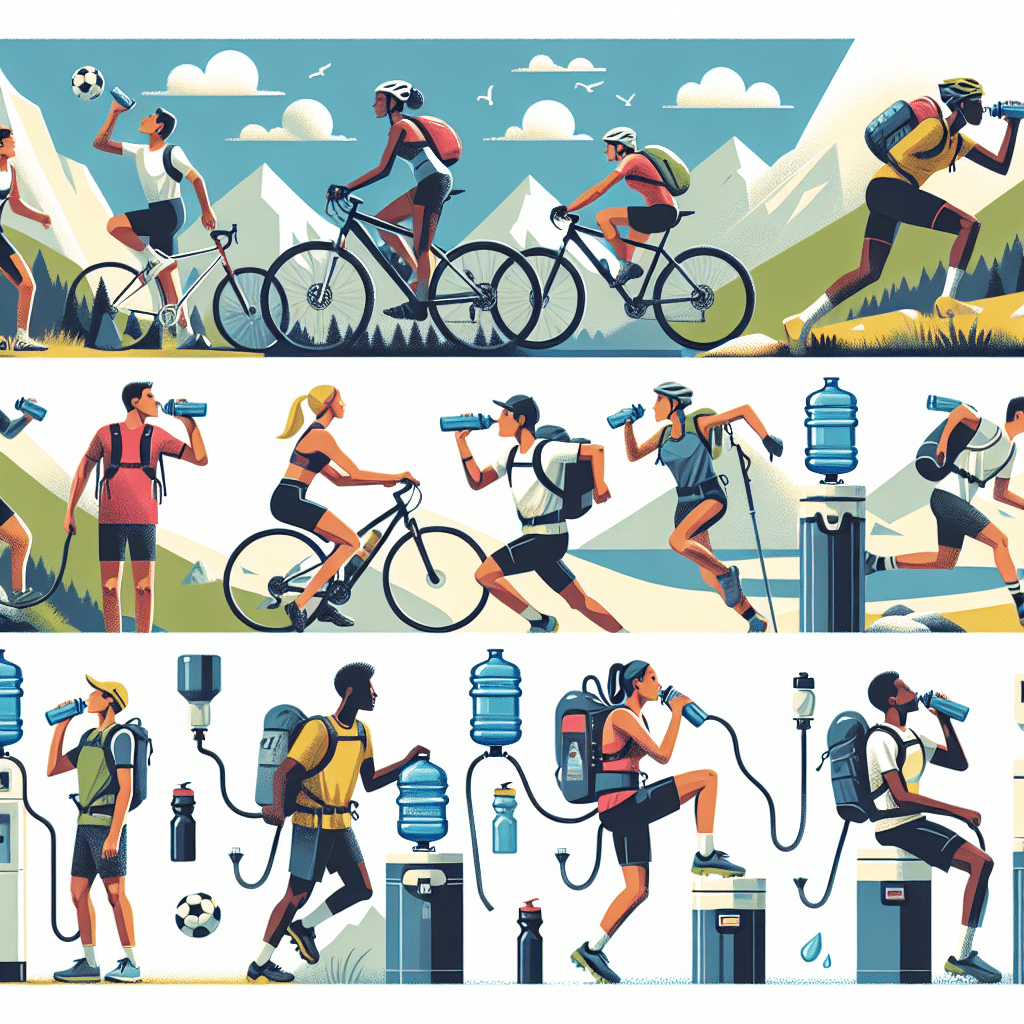Understanding Hydration in Outdoor Sports
Hydration is crucial for anyone engaging in outdoor sports. Maintaining an optimal fluid level in the body not only enhances performance but also prevents injuries and heat-related illnesses. Regardless of your sport, whether running, cycling, hiking, or climbing, the need for proper hydration practices cannot be overlooked.
The Importance of Staying Hydrated
When participating in outdoor activities, sweating is inevitable. This leads to the loss of water and essential electrolytes, which are vital for muscle function. Proper hydration ensures that your body can regulate temperature, transport nutrients, and maintain overall health. Dehydration can result in fatigue, dizziness, muscle cramps, and impaired performance.
Guidelines for Hydration Before Exercise
-
Pre-Hydrate: Start your hydration strategy well before you step outside. Aim to drink at least 16-20 ounces of water two hours before your activity. This ensures your body is adequately prepared.
-
Know Your Needs: Individual hydration needs vary based on body weight, temperature, and exercise intensity. A general rule is to drink half your body weight in ounces daily, adjusting according to activity levels.
-
Include Electrolytes: For long-distance or high-intensity activities, consider sipping on an electrolyte-rich beverage beforehand. This prepares your body for the sodium and potassium losses during your workout.
Hydration Tips During Outdoor Sports
-
Drink Consistently: Instead of waiting until you feel thirsty, sip on water or sports drinks at regular intervals. Aim for about 7-10 ounces every 10-20 minutes during your activity.
-
Choose the Right Beverage: Water is ideal for shorter sessions, but for longer activities exceeding an hour, opt for a sports drink that includes electrolytes. This helps replenish lost minerals.
-
Be Mindful of Heat: In hot and humid conditions, your body will lose fluids more rapidly. Increase your hydration intake during these times. Keep an eye out for symptoms of heat exhaustion, which can include nausea and excessive sweating.
-
Monitor Urine Color: A good indicator of your hydration level is the color of your urine. Pale yellow usually indicates proper hydration while dark urine suggests the need for more fluids.
Hydration After Exercise
-
Replenish Fluid Loss: Post-activity, continue to hydrate. Aim to drink at least 16-24 ounces for every pound lost during exercise. Weigh yourself before and after to quantify your fluid loss accurately.
-
Eat Hydrating Foods: Incorporating fruits and vegetables into your post-workout meal can aid in rehydration. Watermelon, oranges, cucumbers, and strawberries are excellent options.
-
Recovery Drinks: Consider protein shakes that also include hydration properties. These can be beneficial in muscle recovery while helping to restore fluid balance.
Tools and Strategies for Staying Hydrated
-
Hydration Packs: For activities like hiking or biking, use hydration packs with built-in reservoirs. These allow for easy sipping without stopping.
-
Water Bottles: Always carry a reusable water bottle. Choose one that suits your activity and is convenient to hold. Insulated bottles can keep drinks cold for longer periods.
-
Set Reminders: Use phone reminders or watch timers to prompt hydration breaks. Establish a routine so that drinking becomes a habitual part of your activities.
-
Track Fluid Intake: Use apps or journals to monitor your hydration. Recording your fluid intake can help create accountability and ensure you’re meeting your hydration goals.
Recognizing Signs of Dehydration
As outdoor athletes, it’s essential to recognize the signs of dehydration:
- Thirst: The body’s initial response to fluid loss.
- Dry Mouth/Tongue: A clear indicator of needing more fluids.
- Fatigue: Lack of energy can be related to fluid imbalance.
- Headaches: Often a symptom of dehydration, especially in hotter conditions.
- Dizziness: A result of reduced blood volume and increased heart rate.
If you experience these symptoms, take immediate steps to hydrate.
Planning for Different Conditions
-
Cold Weather: In colder climates, you may not feel thirsty but can still lose significant fluids through respiration and sweat. Dress warmly and keep hydrated.
-
Altitude: Higher altitudes can lead to quicker dehydration due to lower humidity. Increase your fluid intake when at elevation.
Special Considerations
-
Age: Young athletes and seniors have different hydration needs. It’s crucial to tailor fluid intake based on age-related factors.
-
Medical Conditions: Certain health conditions can influence hydration needs. Consult with healthcare professionals if you have chronic conditions.
-
Pregnancy and Lactation: Women who are pregnant or breastfeeding should pay extra attention to hydration, as fluid needs are elevated.
Conclusion (Omitted)
By understanding your hydration needs and implementing these tips, you will be better equipped to perform at your best in outdoor sports. Stay informed, track your intake, and make hydration an integral part of your routine for optimal performance and health.
